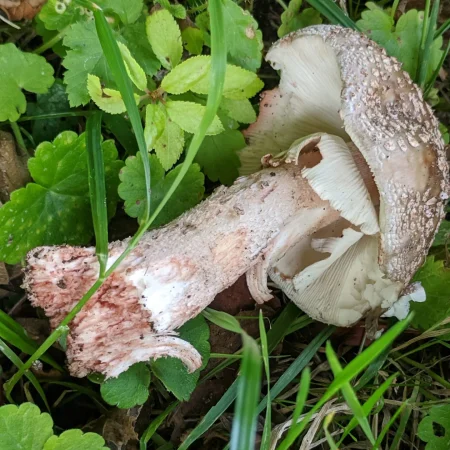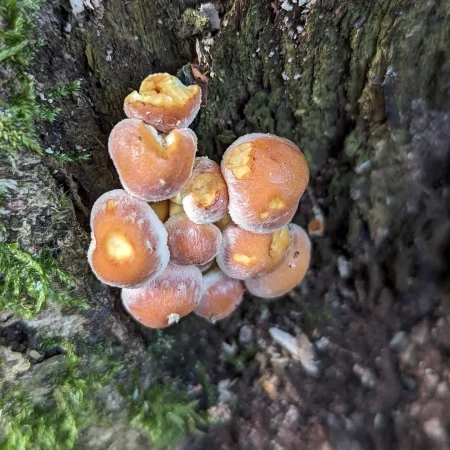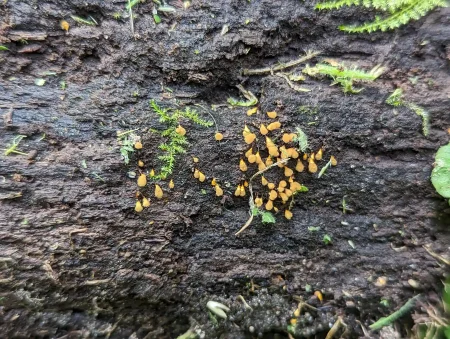ENTRANCE AREA
In the overflow car park I found two large fruitbodies of Amanita rubescens (Fig. 3.0).
The Agaricus from last week had deteriorated into black remains.
BASECAMP AREA
At the path down to Basecamp, the Fuligo cinerea had deteriorated into black spores.
THE DELL
In the Dell, I found a new group of Hypholoma fasciculare (Fig. 3.2) had come up in a hazel coppice stump and a new group of Hemitrichia clavata (Fig. 3.1) sporangia.
SANDY GLADE AREA
In the Sandy Glade Area — on the same log as from Day 1 — I noticed another group of
Hemitrichia clavata had erupted into spore mass.
ENCLOSED AREA
In the Enclosed Area, the Picipes badius had grown and taken on a darker colour.
OUTPOST AREA
Uprooted on the path I noticed a grey Russula species (Fig. 3.3).
I saw many Fuligo species (Figs. 3.4 & 3.5) in The Outpost Area — most prominently on the logs either side of the path behind The Outpost.
Russula species
The Outpost Area
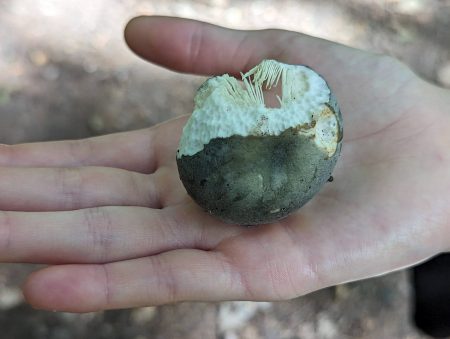
Figure 3.
Fuligo cinerea
The Outpost Area
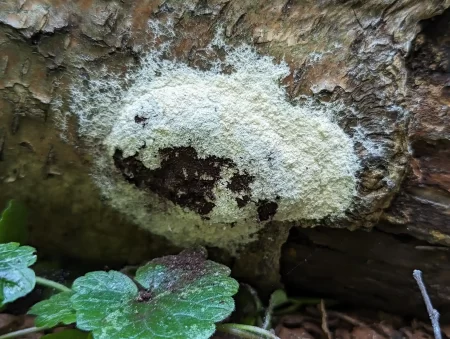
Figure 3.
Fuligo septica
The Outpost Area
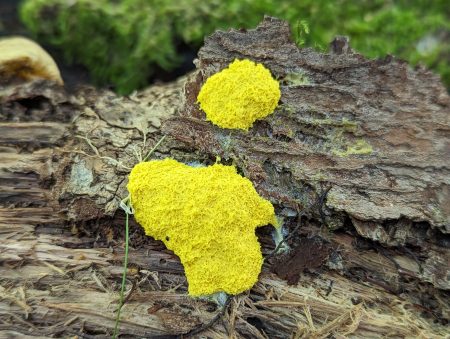
Figure 3.
TRAIL END AREA
On one of the log piles left of the path, I found many more Fuligo septica, large groups of Arcyria cinerea and a smaller group of Stemonitis (Fig. 3.6).
To the left of the woodland path, in the leaf litter, I spotted two Russula ochruleuca (Fig. 3.7) and a juvenile Amanita rubescens (Fig. 3.8).
Stemonitis species
Trail End Area
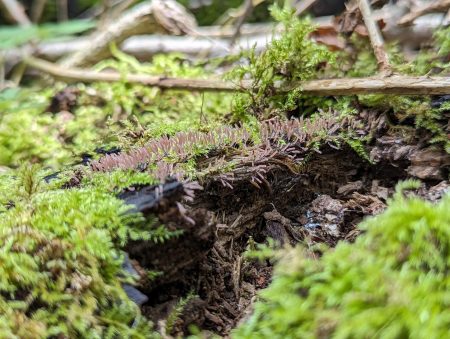
Figure 3.
Russula ochroleuca
Trail End Area
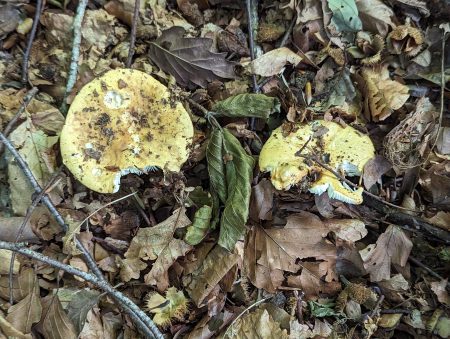
Figure 3.
Amanita rubescens
Trail End Area
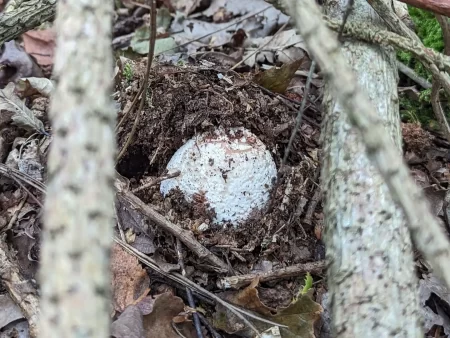
Figure 3.
OTHER
I also began to see other groups of Ceratiomyxa fruticulosa forming on rotting wood throughout the reserve woodland, and the Scleroderma citrinum were still abundant, especially just after the Outpost.
